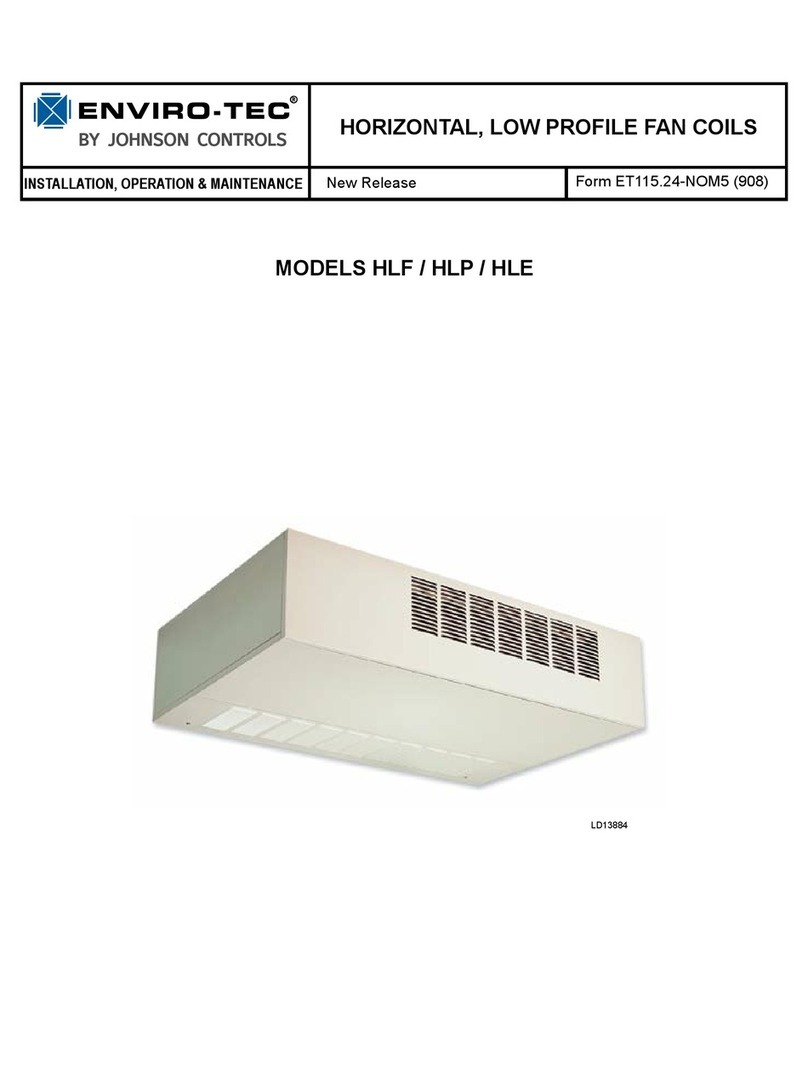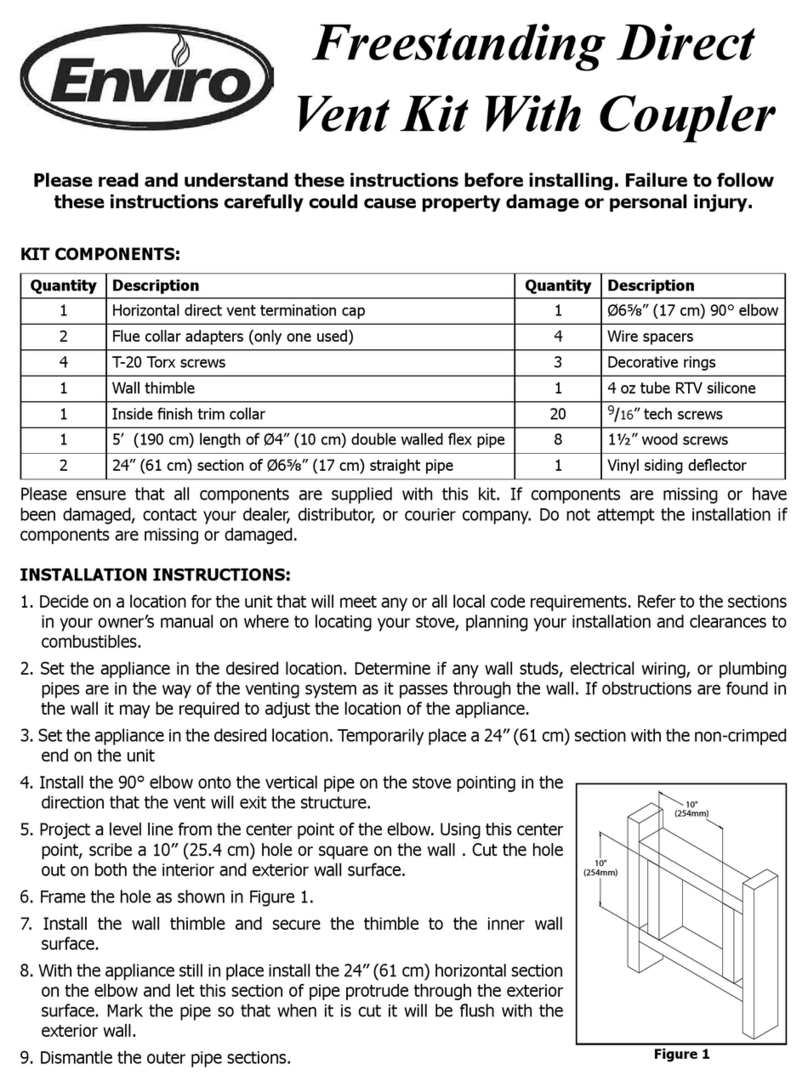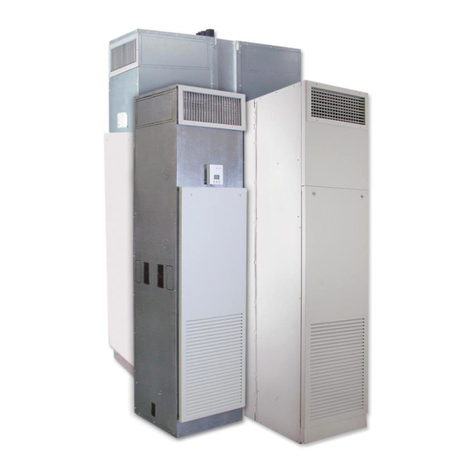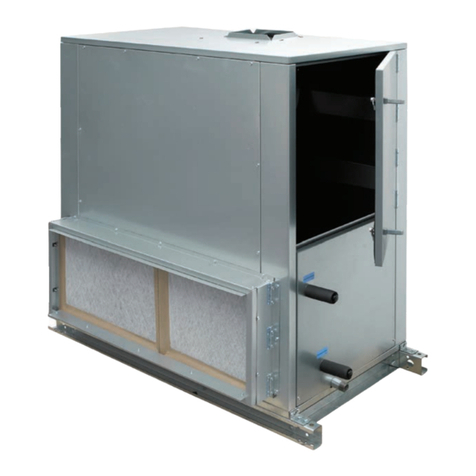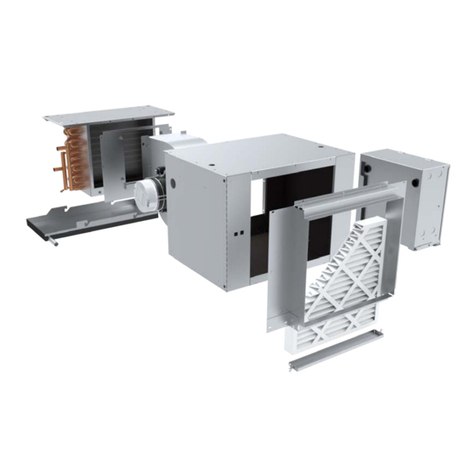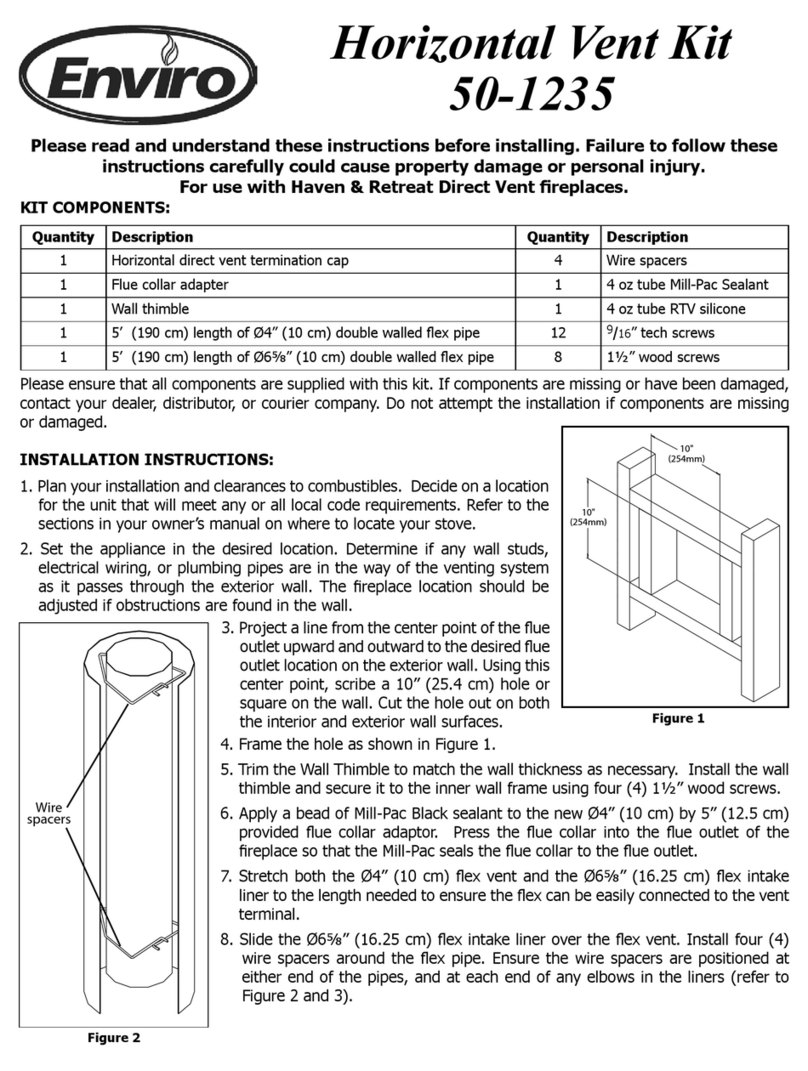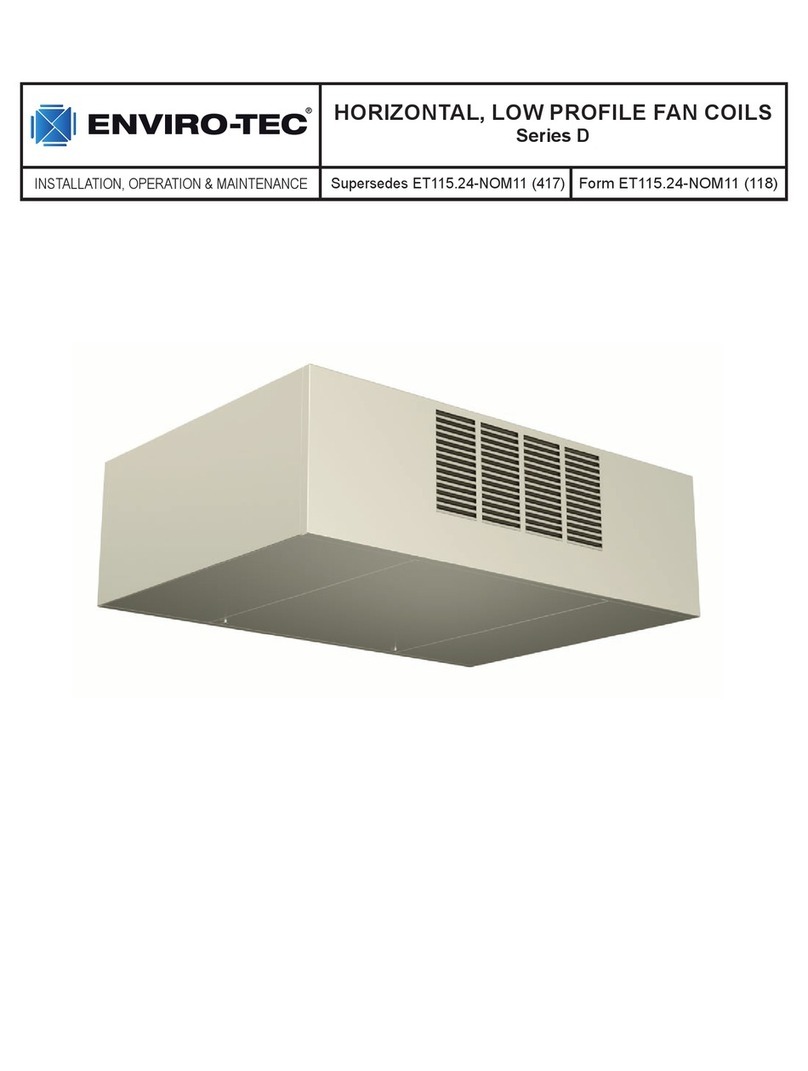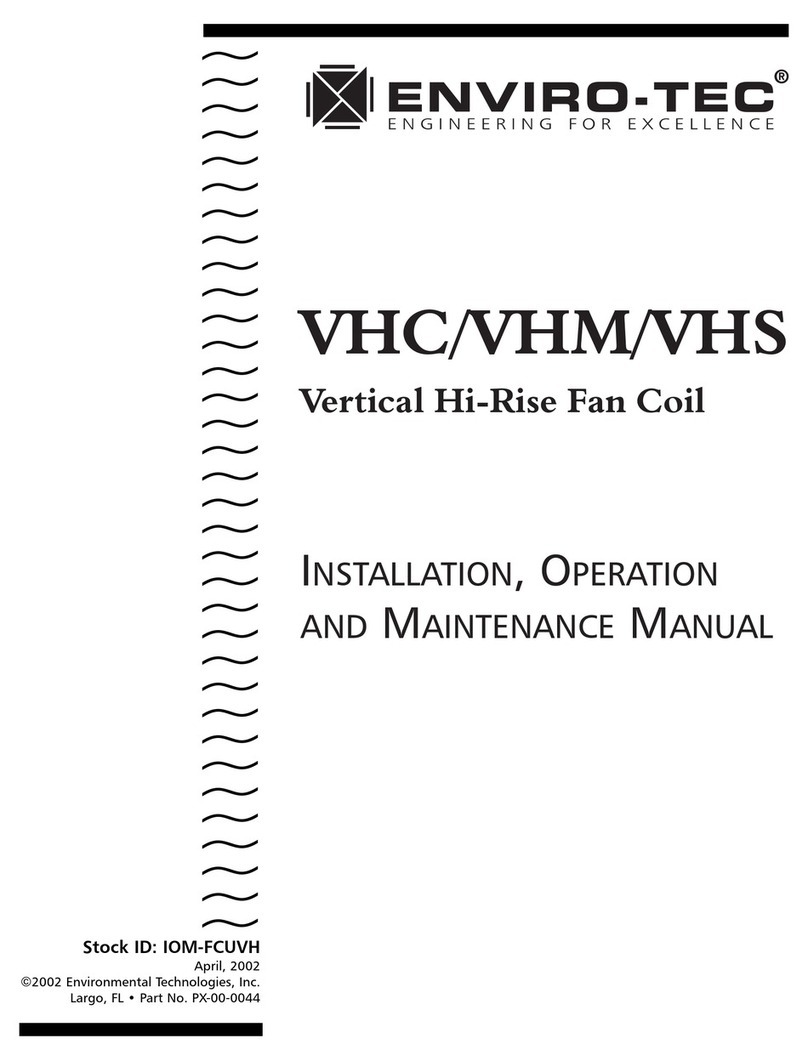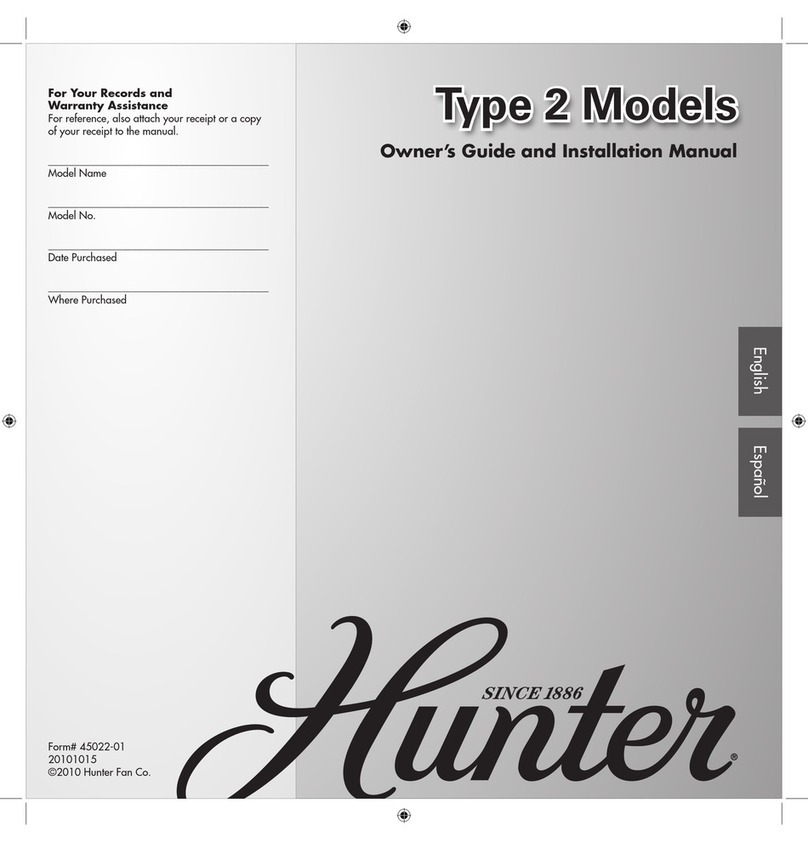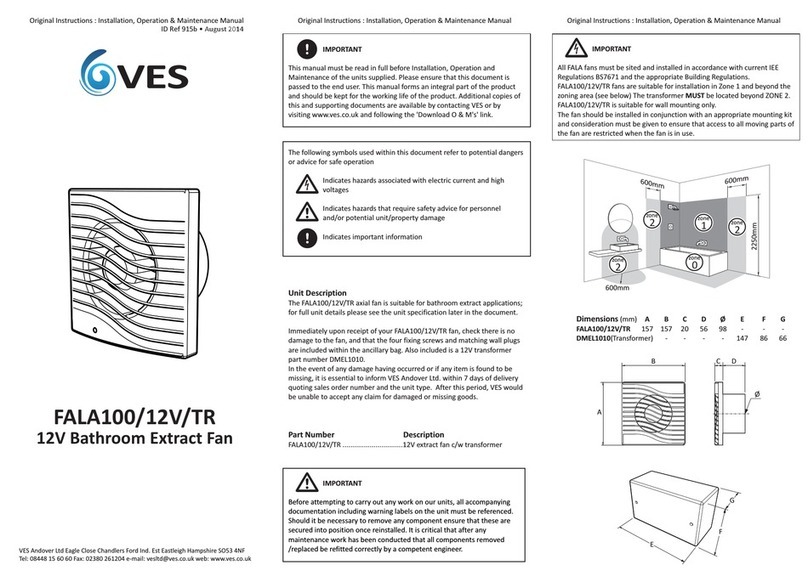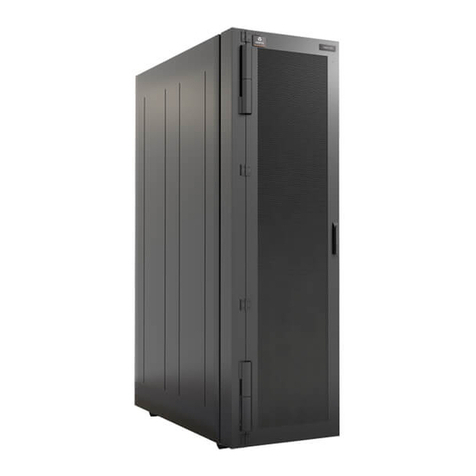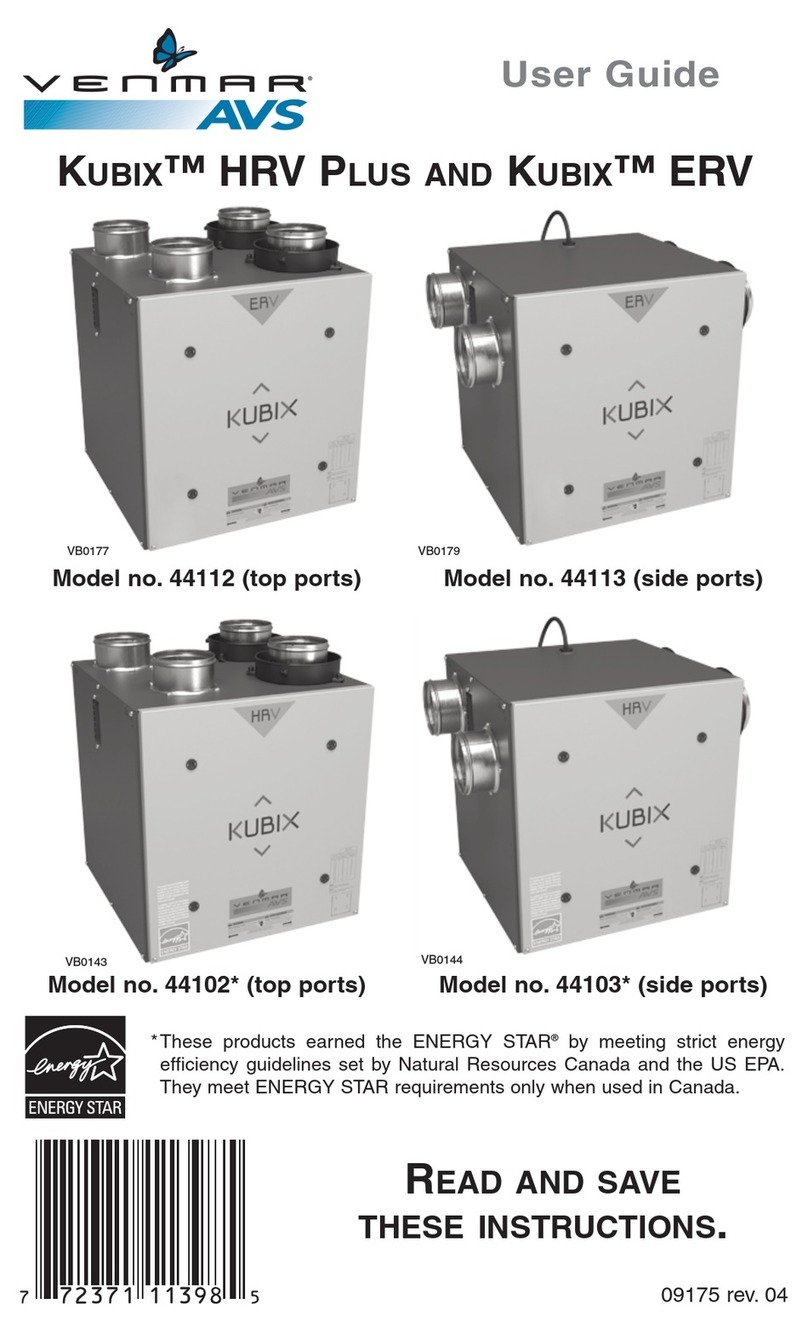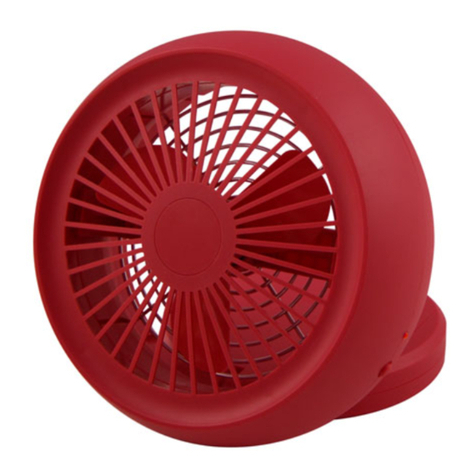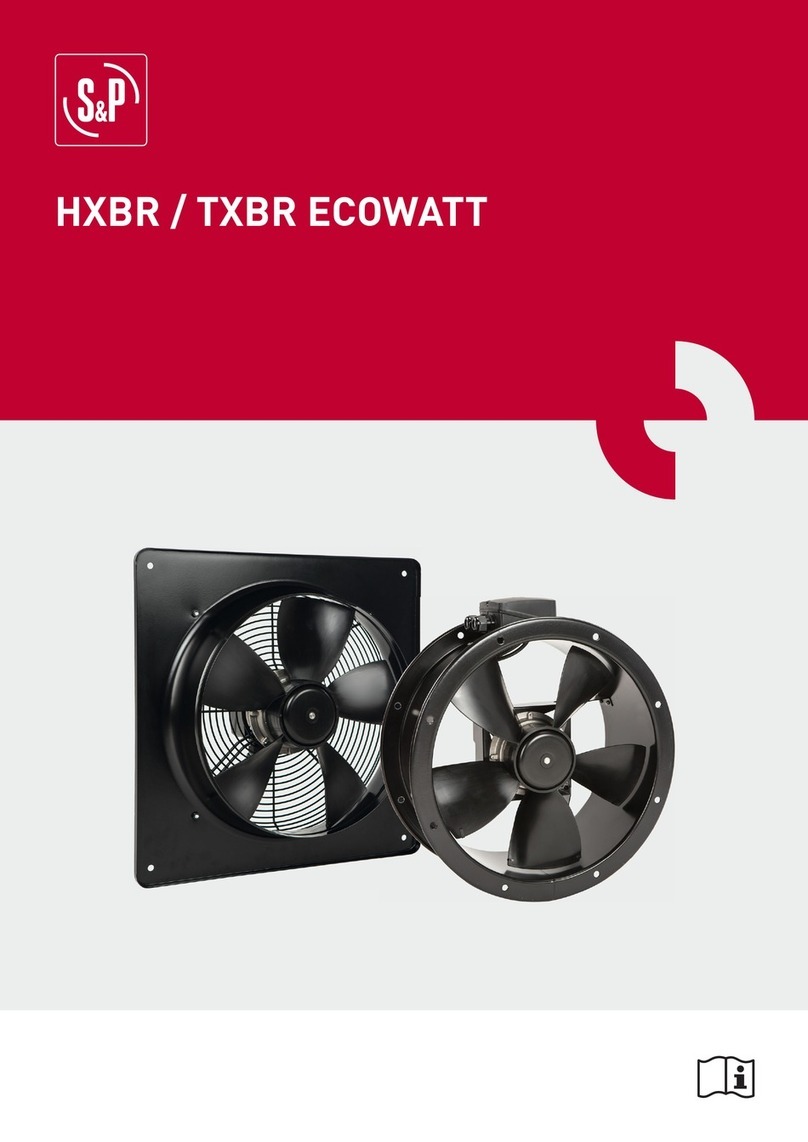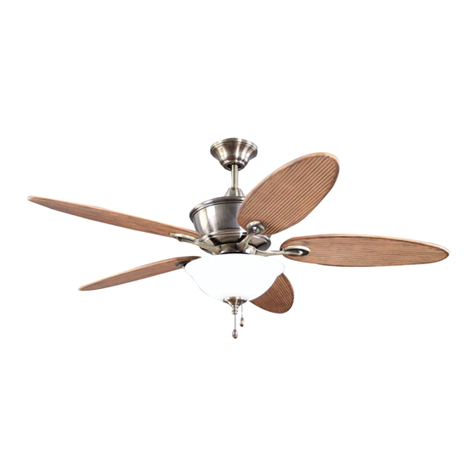
JOHNSON CONTROLS 7
FORM ET115.24-NOM9 (908)
In the case of a full cabinet unit, the unit must obviously
be handled by the exterior casing. This is acceptable
providing the unit is again maintained in an upright
position and no impact forces are applied that may
damage internal components or painted surfaces. The
equipment covered in this manual IS NOT suitable
for outdoor installations. The equipment should never
be stored or installed where it may be subjected to a
hostile environment such as rain, snow, or extreme
temperatures.
During and after installation, special care must be taken
to prevent foreign material such as paint, plaster, and
drywall dust from being deposited in the drain pan or
on the motor or blower wheels. Failure to do so may
have serious adverse effects on unit operation and in
the case of the motor and blower assembly, may result
in immediate or premature failure. All manufacturers’
warranties are void if foreign material is deposited on
the motor or blower wheels of any unit. Some units and/
or job conditions may require some form of temporary
covering during construction.
While the manufacturer does not become involved
in the design and selection of support methods and
components, it should be noted that unacceptable
system operating characteristics and/or performance
may result from improper or inadequate unit structural
support. In addition, adequate clearance must be
provided for service and removal of the equipment and
its accessory components. Anchoring the equipment in
place is accomplished by using the mounting points
provided and positioning the unit to maintain the unit
on a LEVEL plane. The drain pan is internally sloped
toward the outlet connection. Care must be taken to
insure that the unit drain pan does not slope away from
the outlet connection.
The unit's drain pan is factory sloped
toward the drain connection when the
unit is installed level and plumb.
Vertical units are designed to be oor mounted or
otherwise supported from below and bolted to the wall
structure through the mounting holes provide in the
chassis. Vertical concealed units are designed to be
oor mounted or otherwise supported from below and
may be anchored directly through the cabinet back.
Units with leveling legs must be anchored through the
cabinet back.
If equipped with optional leveling legs, the legs can
be adjusted with a wrench before anchoring the unit
in place.
The type of mounting device is a matter of choice,
however the mounting point should always be that
provided in the chassis, or cabinet. Refer to the unit
product drawing for mounting hole location and
sizes.
If equipped with optional falseback spacers or subbases,
these accessories must rst be assembled and mounted
to the unit before anchoring.
After mounting the unit, it is then ready for the various
service connections such as water, drain and electrical.
At this time it should be veried that the proper types
of service are actually provided to the unit.
On those units requiring chilled water and/or hot water,
the proper line size and water temperature should be
available to the unit. In the case of refrigerant cooling,
the proper line size and refrigerant type should be
available at the unit. The auxiliary drain pan is shipped
loose for eld installation. See the Auxiliary Drain Pan
Installation Details for instructions (next page). On
units with steam heating coils, the proper line sizing
and routing should be veried and the maximum steam
pressure applied to the unit should never exceed 15
psig. The drain piping and steam trap should be sized
and routed to allow for proper condensate ow. The
electrical service to the unit should be compared to
the unit nameplate to verify compatibility. The routing
and sizing of all piping, and the type and sizing of all
wiring and other electrical components such as circuit
breakers, disconnect switches, etc. should be determined
by the individual job requirements and should not be
based on the size and/or type of connection provided
on the equipment. All installations should be made in
compliance with all governing codes and ordinances.
Compliance with all codes is the responsibility of the
installing contractor.
COOLING/HEATING MEDIUM CONNECTIONS
Toxic residues and loose particles
resulting from manufacturing and
eld piping techniques such as joint
compounds, soldering ux, and metal
shavings may be present in the unit
and the piping system. Special con-
sideration must be given to system
cleanliness when connecting to solar,
domestic or potable water systems.
